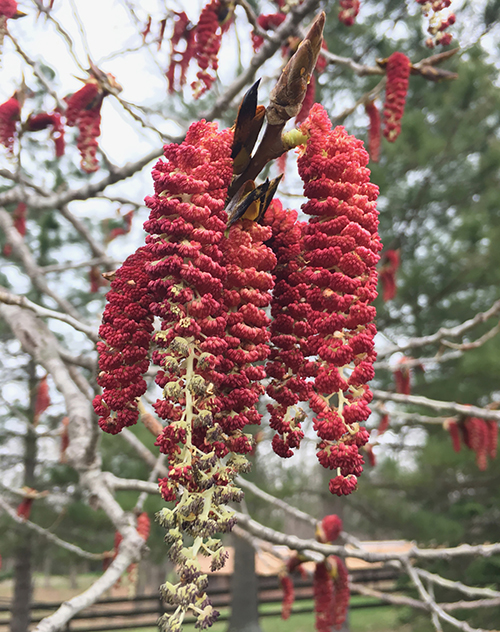
MIKE MILLER
The cottonwood is a real over-achiever at putting on girth. It is one of the fastest growing and largest trees you will find in Illinois. Until fairly recently, the largest tree in Illinois was a cottonwood growing in Gebhard Woods State Park. Unfortunately, cottonwoods can grow too big for their own good, and this tree toppled over in a windstorm some years ago. The same happened to a huge cottonwood that was growing at Forest Park Nature Center.
While the quick growth can sometimes cause some issues for the tree itself, other species benefit from this characteristic. One reason that Bald Eagles are making a comeback in Illinois is that there are now numerous cottonwood trees that have grown to a substantial size along our rivers and waterways. The eagle and cottonwood are connected. A big bird that builds a big nest needs a big tree. The cottonwood’s ability to get to a substantial size in 50 years has created numerous nesting sites along the Illinois River. If you look at what tree an eagle’s nest is in, it will likely be a cottonwood.
Numerous other species depend on the cottonwood. It is one of the favorite nesting trees for the Pileated Woodpecker; a woodpecker the size of a crow that needs large trees to excavate its tree-hole nests. The dangling branches of the cottonwood are a favorite location for the Baltimore Oriole to build a nest, and the leaves of the cottonwood, are a food for the caterpillars of such butterflies as the Viceroy, Red Spotted Purple and Tiger Swallowtail.
Then there are the seeds. The windblown fluff that can actually accumulate in drifts where trees are numerous. But not all cottonwoods produce “cotton.” Eastern Cottonwood is dioecious; individual trees produce either all male (staminate) flowers or all female (pistillate) flowers. These flowers are produced during the spring before the leaves develop in the form of drooping catkins about 2- to 3-inches long. The male flowers can be quite stunning with brilliant red color. The female flowering trees are the only ones that will produce the seed.
Once the leaves develop, the cottonwood takes on a whole new dimension. Its large, triangular shaped leaves sit atop a flattened petiole. The slightest breeze will set the tree to flutter, each leaf waving to greet the wind. It has to be our most animated tree, and the rustling of the leaves overhead is a true sound of summer along any riverbank.
The next time you are out along the Illinois River, or any of its tributaries, take a moment and look up as you rest in the shade of a tree. It will likely be our old friend the Eastern Cottonwood. Take an extra moment to notice its shape, its size, its sound. Get to know this fellow inhabitant of this wonderful planet we call Earth. It will make your moment together much more meaningful.

The brilliant red flowers of the male cottonwood tree hang from branches in early spring. (PHOTO BY MIKE MILLER)

Recent Comments